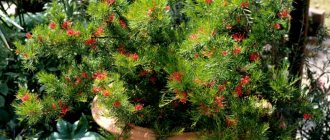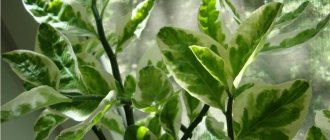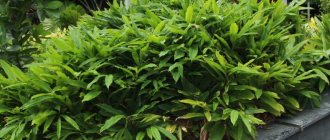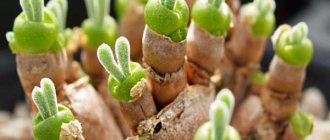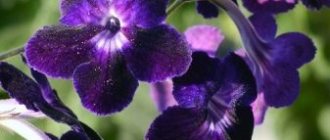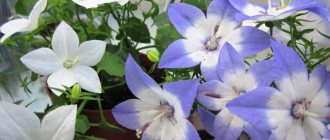Indoor grapes are perhaps the best solution for indoor landscaping. If residents love clean air and indoor vines covering walls and ceilings, then this plant will become their favorite. In a couple of years, indoor grapes can cover and ennoble the vertical surface intended for it - walls, indoor trellises, furniture, jambs, windows and other interior items.
Its bright green foliage, covered with fluffy brown fibers, attracts attention, calms and lifts the mood of its owners. It gives the impression that you are in the forest. Indoor grapes perfectly purify the air and give it a tart aroma. This brief body of knowledge is intended for those who want to grow this wonderful plant, where you will learn about the types of grapes, growing conditions, rules of care and propagation. Useful information will help you grow thick and succulent vines that wrap around walls - a piece of real jungle at home.
general information
Cissus is one of the representatives of perennial vines.
As the shoots grow, they reach 3.5 m in length.
With age, the base of the plant becomes lignified, loses its former flexibility and is enveloped in gray bark, which soon begins to crack and peel off.
The stems have characteristic internodes containing tendrils and petiolate leaves. Often the ends of the antennae form disc-shaped suckers, necessary for clinging to adjacent surfaces.
The light green petiolate leaves are lobed, palmately compound, or entire. They are fastened one after another. The root system is compact.
Reference! Flowering when grown indoors is very rare, but the plant benefits from beautiful decorative foliage.
During the flowering period, small flowers of greenish color form clusters; if pollination occurs, black or red fruits containing seeds will appear in the future.
Propagation of indoor grapes at home
You can propagate a birch tree, as this type of houseplant is colloquially called, in several ways:
- Cuttings or dividing a bush are the most common options for growing indoor ivy. To do this, the top of any shoot about ten centimeters in length is cut off and placed in a glass with slightly warm water. For a faster effect, the liquid is supplemented with any stimulant for root formation. You can also place the shoot in sufficiently moist soil and cover it with a glass container. In the latter case, it is recommended to systematically ensure the supply of oxygen to the improvised greenhouse.
- Growing from seeds is a longer way to get a new plant. After the shoots appear, you need to wait for the first pair of leaves and only then plant them in separate containers, the diameter of which should be about seven centimeters.
Cissus: types and varieties
The genus has more than 350 species. The most popular cissus indoor plants include the following representatives:
- Cissus rhombifolia (or cissus rhombifolia). A perennial vine with thin and flexible shoots.
The diamond-shaped leaves are arranged alternately on small petioles. Racemose inflorescences are formed from small green flowers. After pollination, edible red berries appear during the ripening season. - Antarctic cissus (or arctic cissus). Evergreen vine with long shoots. The leaves are ovoid or oval in shape and have characteristic teeth along the edges.
The color is dark green on the front side, slightly lighter with slight pubescence along the veins on the back. The internode contains a leaf and, oppositely located, tendrils. The inflorescence is formed from small yellow-green flowers. - Cissus quadrangular. Representative of medicinal plants. The shoots are distinguished by their original tetrahedral shape up to 1-1.5 cm in diameter.
Small leaves, divided into three lobes, quickly fall off. The plant develops quite slowly in any conditions. - Cissus Helen Danica. A popular decorative variety of rhomboid cissus.
Has bright carved leaves. - Cissus variegated. It is popular due to the original color of the leaves.
The front side is dark green with silver and burgundy-brown markings, the back surface is dark pink. On the eve of winter, the plant sheds most of its crown; with the onset of the warm season, the decorative foliage is restored. - Cissus rotundifolia. Liana with clinging stems.
The green leaves are characterized by a waxy coating and rounded shapes with fine teeth along the edges. - Cissus striata (striated). It is distinguished by the smallest three-lobed or five-lobed leaves in the genus.
The stems of the plant can grow up to 10 m. The shoots are characterized by a reddish tint. The flowers are light green in color; after pollination, black fruits ripen.
Varieties of cissus
In the natural environment there is an impressive number of varieties, but here are several indoor species:
- Rhomboid or rhombic cissus - received this name because of the typical shape of the leaves. The most unpretentious look. Externally, it is a vine-like plant, with a flexible, dense and curly stem, which is covered with fluffy brown fibers and dark green, succulent, diamond-shaped leaves.
The main feature of the species is that it is capable of spreading in all directions in a short time and with a minimum of attention, while entwining itself with any support that comes under its tendrils on the stems. It was this species that was popularly given the name “indoor birch”.
Several more varieties have been developed using the rhomboid species:
- "Mandianna" is a variety with large shiny leaves. Resistant to sudden temperature changes.
- 'Ellen Danica' has intricately patterned leaves with a dissected shape.
- "Fionia" - the stem is decorated with large, impressively sized carved leaves.
- Antarctic (Cissus Antarctica) - due to its grape-like leaves, it received the second name for indoor grapes. In natural conditions, Cissus Antarctic is impressive with its appearance as a climbing, ubiquitous vine with a woodier stem. In a room environment, its ability to twine did not disappear, but the stem began to have greater flexibility and plasticity.
- Multi-colored (Cissus discolor Planch) is a rare representative of its genus due to its whimsical nature. The conditions of detention imply the presence of high humidity and the same ambient temperature. Therefore, despite its picturesque leaf color, not many people undertake to grow it as a houseplant.
Indeed, the multi-colored variety differs significantly from similar species in its unique leaf pattern, which is made in a bizarre range of light silver spots on a dark fill, and the reverse side complements the contrast with a red-lilac color. Species such as quadrangular, round-leaved, cactus-shaped, glandular, sometimes danica and helen are not always found as a house plant. Some rare specimens can still be found, but only in botanical gardens.
Cissus: can you keep it in the house - useful properties and signs
Thanks to the high bacterial and phytoncidal activity of the indoor flower, the atmosphere in the home is cleansed. Microcomponents released by cissus kill bacteria that cause allergic diseases and gastrointestinal disorders.
Decorative vine perfectly humidifies the air in the room and absorbs excess dust.
Helps get rid of formaldehyde - fumes from building materials, which often cause headaches, provoke nausea, and irritate the respiratory system.
Several pots of plants in the room increase vitality and reduce fatigue.
Popular signs and superstitions associate the cissus flower, like most lianas, with a muzhigon flower, that is, the flower is capable of surviving a spouse from home. Whether or not to keep hanging plants at home is up to everyone to decide for themselves; most flower growers do not pay attention to these myths.
Description
Cissus is presented in the form of a vine on which tendrils grow. With their help, the plant clings to various supports that it stumbles upon. Leaves, depending on the type, can be dissected or whole. As for flowering, here grapes are much inferior to other indoor plants. Its flowers are completely inconspicuous, have a rather pale hue and are collected in small umbrella inflorescences. However, indoor grapes have something to boast about - their leaves, which are valued above all else in this plant.
Grapes are grown exclusively in hanging pots to give them the opportunity to climb. Caring for this flower is very simple, so even novice gardeners can safely plant such a plant for themselves. Cissus will be a wonderful decoration not only for an apartment, but also for an office or other work space. At home, you can most often find such types of indoor grapes as multi-colored, diamond-leaved and Antarctic.
How to care
Particularly popular among flower growers are diamond-shaped and Antarctic cissus, which are distinguished by their unpretentiousness, growth rate, and decorativeness.
Of course, the vine will take root in almost any room, but in order for the plant to always be pleasing to the eye, to fully develop and not suddenly die, it is important to adhere to the criteria for proper care.
Priming
Homemade grapes are unpretentious to soil, which can be purchased at any specialized store.
It is always possible to prepare the soil yourself by mixing leaf humus with turf and garden soil, peat and coarse sand in a ratio of 2/1/1/1/0.5.
Temperature and lighting
Popular varieties of cissus are adapted to a fairly wide temperature range - 10-25°C. Particularly hardy varieties are able to withstand temperature drops of up to 5°C, but only for a short time.
Multi-colored cissus is more whimsical in this aspect; the favorable temperature range is 18-25°C.
It is a mistake to believe that the vine does not tolerate drafts. This is a wrong opinion.
Cissus is only afraid of sharp gusts of cold wind, after which the flower can shed its crown. If the weather outside permits, pots with plants can be temporarily placed, for example, on a balcony or veranda.
It is best to place indoor cissus flowers near western or eastern windows. Direct rays of the sun are detrimental to the vine and can cause burns on the leaves.
If the flower is completely protected from the sun, it is important to take care of artificial light sources - high-power phytolamps, which must be in operating mode for at least 16 hours a day.
Watering and fertilizing
Cissus develops rapidly, while quickly depleting the soil. Therefore, from April until the end of summer, it is advisable to fertilize the vine twice a month; in other cases, monthly feeding is sufficient. To do this, you can take any composition for indoor flowers.
Given the fact that the vine actively releases moisture, it needs abundant watering both in summer and winter.
The intensity of irrigation increases with the onset of spring and decreases in autumn.
It is recommended to adjust watering individually, since the plant reacts poorly to both excess and lack of water.
The first case is often accompanied by root rot, while in the second case drying of the stem is observed.
Trimming
The liana needs periodic pruning to maintain its decorative effect. Long and old shoots, on which the foliage cover has noticeably decreased, can be pruned.
The branch is cut by about half or a little more to allow the formation of lateral branches.
Transfer
Mature vines are usually replanted once every 2-3 years, young ones - once a year.
Favorable period is March.
The transplant is carried out in several stages:
- the cissus is removed from the old container, leaving the soil on the roots;
- fresh soil in the required quantity is poured into a new pot and the plant is placed there;
- If root rot develops due to excess moisture, the soil is completely changed.
This process is called transshipment. You should not use bulk pots for replanting, as the flower takes root and develops better in cramped containers.
Reproduction
The easiest way to propagate decorative grapes from cuttings at home.
The cut cuttings should have several leaves. Until the first roots appear, it is placed in water, then transplanted into a pot with soil familiar to an adult plant.
This video contains a detailed story about growing, caring for, feeding and propagating cissus:
Dividing the bush is mainly done during the spring replanting season. An adult vine is removed from the old container and divided into several parts, each of which should have an already formed shoot and a sufficiently developed rhizome. The sorted bushes are planted in different pots.
Growing conditions
The air temperature for almost all types of indoor grapes should be 22°-25°, not higher. In winter, the temperature can be reduced to 18°-20°. As long as the bush is small and not completely attached to the vertical support, it can be taken out into the fresh air in the summer. Temperature changes are undesirable for cissus, especially for a bicolor species. Try to avoid this.
When determining a place for grapes, choose rooms facing east and west, where there are no drafts.
Indoor grapes love bright but diffuse lighting. It is better not to place it near windows. Choose for it niches in the walls or places where sunlight will fall, but not direct sunlight. The plant is shade-loving, but dark places, without any light, are undesirable.
Increased dry air is not suitable for indoor grapes. He will die very quickly. Prefers moderately humid places, but not damp. It is necessary to constantly monitor the soil moisture and prevent the earthen ball from drying out. The optimal soil composition will be a mixture of leaf soil, peat, humus, turf and sand. Ratio 1:1:1:1:1. Moderate humidity, bright and diffused light, optimal temperature will be the key to lush and beautiful growth of strange vines.
Possible problems and illnesses
Almost all cissus diseases are the result of improper care:
- the leaf cover loses its former color - the vine needs mineral fertilizer;
- the leaves bend in one direction or another - the plant is not satisfied with air humidity, it is recommended to place a container of water next to the cissus and regularly spray the crown;
- spots on the lower leaves, wrinkling - insufficient watering;
- drying of shoots, premature loss of foliage - excess moisture;
- the tips of the leaves dry out - the flower requires more air humidity, in winter the cause may be frostbite;
- brown spots on the leaves - lack of phosphorus nutrition, it is necessary to select the appropriate fertilizer;
- the foliage turns pale - too much lighting;
- yellowing of the crown - lack of watering;
- falling leaves - sharp draft, hypothermia;
- the lower part of the stem becomes bare - the plant needs additional lighting.
Temperature
Cissus will feel more comfortable at high temperatures, since, as already mentioned, the tropics and subtropics are considered its homeland. In summer and spring, the temperature in the room where indoor grapes are standing should not fall below 18 degrees, but it is better if the thermometer is at around 25 degrees. In winter and autumn, it is not worth achieving such high temperatures, and it will be quite enough if the air temperature in the room is 18 degrees. In addition, in the summer it is recommended to take pots with this flower outside, where they will feel much better.
Despite the fact that the plant is heat-loving, it can easily withstand temperature changes of up to ten degrees. But the flower should not remain in such conditions for a long time. Here a lot depends on its variety. Since the Antarctic cissus will not suffer much even at a temperature of five degrees, but the multi-colored one needs a constant indicator of at least 16.
It is also worth noting that drafts are strictly contraindicated for this plant, as they can lead to leaf fall.
Pests
The most dangerous enemies of indoor grapes are mealybugs, aphids, and scale insects. If the insect population is insignificant, it is enough to resort to mechanical removal by washing the cissus with an infusion of garlic, orange or tobacco. In case of a large number of pests, the vine must be treated with insecticides.
Cissus is a plant that will not only complement the interior, but also purify the air in the living room.
The plant is absolutely unpretentious in care and can grow in almost any indoor conditions.
Cissus is a long-term representative of the Vinogradov family. It is popular among gardeners due to its unpretentiousness, rapid development, and decorative leaves.
Proper plant care
It is very easy to care for indoor grapes, but the lack of basic watering and fertilizing will lead to the death of the plant. During the period of active growth, spring-summer, grapes are watered abundantly, but not excessively. Overwatering will cause root rot. Use the good old way of checking the soil for moisture - with your finger. If soil sticks to it, then there is no need to water it. If the fingertip is almost dry and the soil does not stick well, watering is needed. This way the plant will not be over-watered.
Do not allow the soil to dry out.
Considering the rapid growth and development of indoor grapes, you should constantly feed them with fertilizer for non-flowering plants. Fertilize once every two weeks. In spring they prefer nitrogen fertilizers, in autumn - potassium-phosphorus fertilizers. In winter, fertilization is stopped; watering will no longer be abundant, but moderate.
As the bush grows, young shoots are pinched and the entire plant is pruned:
- This is done so that the grapes stretch not only upward, but also to the sides. This way the bush will acquire a lush and voluminous shape. WITH
- It is advisable to trim the plant in the spring; cissus tolerates pruning well.
- When forming a bush, be careful with the shoots, they are very fragile and can easily break.
Another important point is the sprinkling process. It is not carried out often - once every six months. This is done rather for hygienic reasons. Indoor grapes perfectly clean the air and for this reason the surface of the leaves becomes very dirty and acquires a grayish coating - dust. Therefore you need to wash it. Following simple rules of care will help to avoid the appearance of diseases and pests, the grapes will always be bright and juicy, strong and healthy.
Diseases of indoor plants (video)
Cissus are among the fairly popular indoor plants that grow very easily and quite quickly in residential and office spaces. Such plants respond gratefully to minimal care, are unpretentious and allow you to landscape both small flower corners and entire walls in a fairly short time, covering them with real exotic thickets.
This method is used to increase the resistance of grapes to pests, diseases, and low temperatures. Cuttings prepared in the fall are placed in a growth stimulator. A split is made on the trunk of the rootstock bush to which the shoot will be grafted. Its size should correspond to the length of the tip of the scion cutting and is 3-4 cm. The cutting is inserted into the slot so that the buds of the bush and the cutting are directed in different directions. A rope or special grafting material is wound around the grafting site. Polyethylene is attached to the top. It should be located above and below the split.

